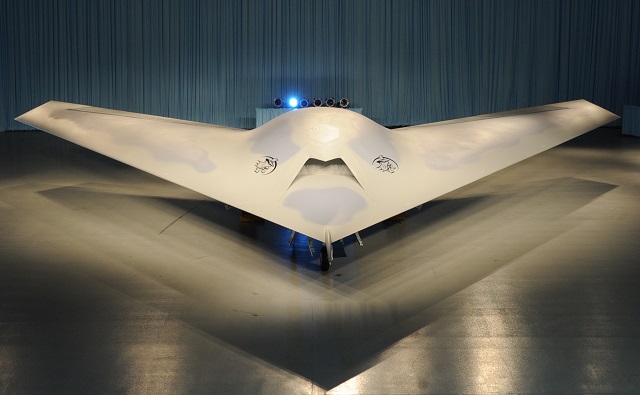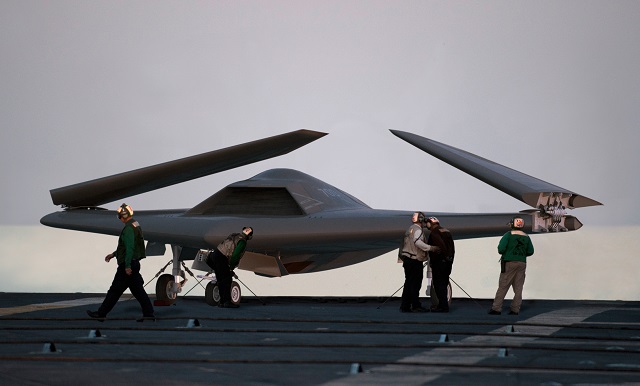The US Navy’s MQ-25 Stingray will leverage an existing Defense Department electro-optical infrared sensor, according to a recently released request for information.
Although the commander of Naval Air Systems Commnad stated last month that the unmanned MQ-25 would focus on a refueling capability, the 25 August RFI details the Stingray’s role as an asset for the intelligence, surveillance and reconnaissance (ISR) mission.
“ISR capability will be evaluated to the extent in which it can be incorporated within the tanking trade space,” the RFI states. “ISR capabilities may include maritime domain awareness via signal intelligence (SIGINT), automatic identification system (AIS), and electro-optical/Infrared (EO/IR) sensors.”
Boeing
The MQ-25 represents the latest version of the Navy’s plans for developing a carrier-based fleet of large, long-range UAVs. An earlier version known as the unmanned carrier launched airborne surveillance and strike (UCLASS) system would have served as an intelligence-gathering asset as well as a penetrating bomber, reviving a deep strike role for carriers that has been dormant since the retirement of the Grumman A-6E Intruder. But UCLASS was scrapped in favour of a new plan called the carrier-based airborne refueling system (CBARS), serving as an escort tanker for short-ranged fighters and as an ISR asset for the fleet.
The Navy is aiming for a small, lightweight EO/IR sensor suite that can track small boats and combatants through a thick maritime atmosphere, the RFI states. The service is considering a sensor with a 19 to 23in turret diameter and 68.5 to 113kg (151 to 250lb) turret weight, or a smaller system with a 13 to 19in diameter and 34 to 68kg weight. The Navy made a modest increase to the turret’s weight parameters, increasing the weight by 27kg compared to an 18 August RFI.

Lockheed Martin
While the Navy wants to reuse a suite from the DOD’s aircraft inventory that would require minimal development costs, the service is open to upgrades that could increase the Stingray’s ability to counter threats.
“Systems that utilize a cooled short wave infrared (SWIR) sensor are preferred,” the RFI states. “The sensor system must be ruggedized to withstand the harsh maritime environment and also suitable for carrier launch and recovery.”
Northrop Grumman, Lockheed Martin, Boeing and General Atomics are competing for the contract to develop the Stingray.
Source: FlightGlobal.com


























